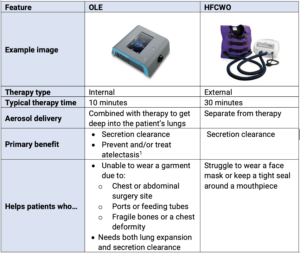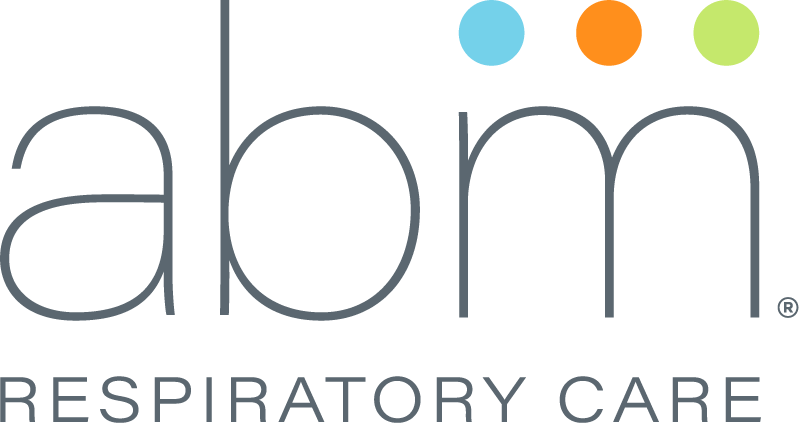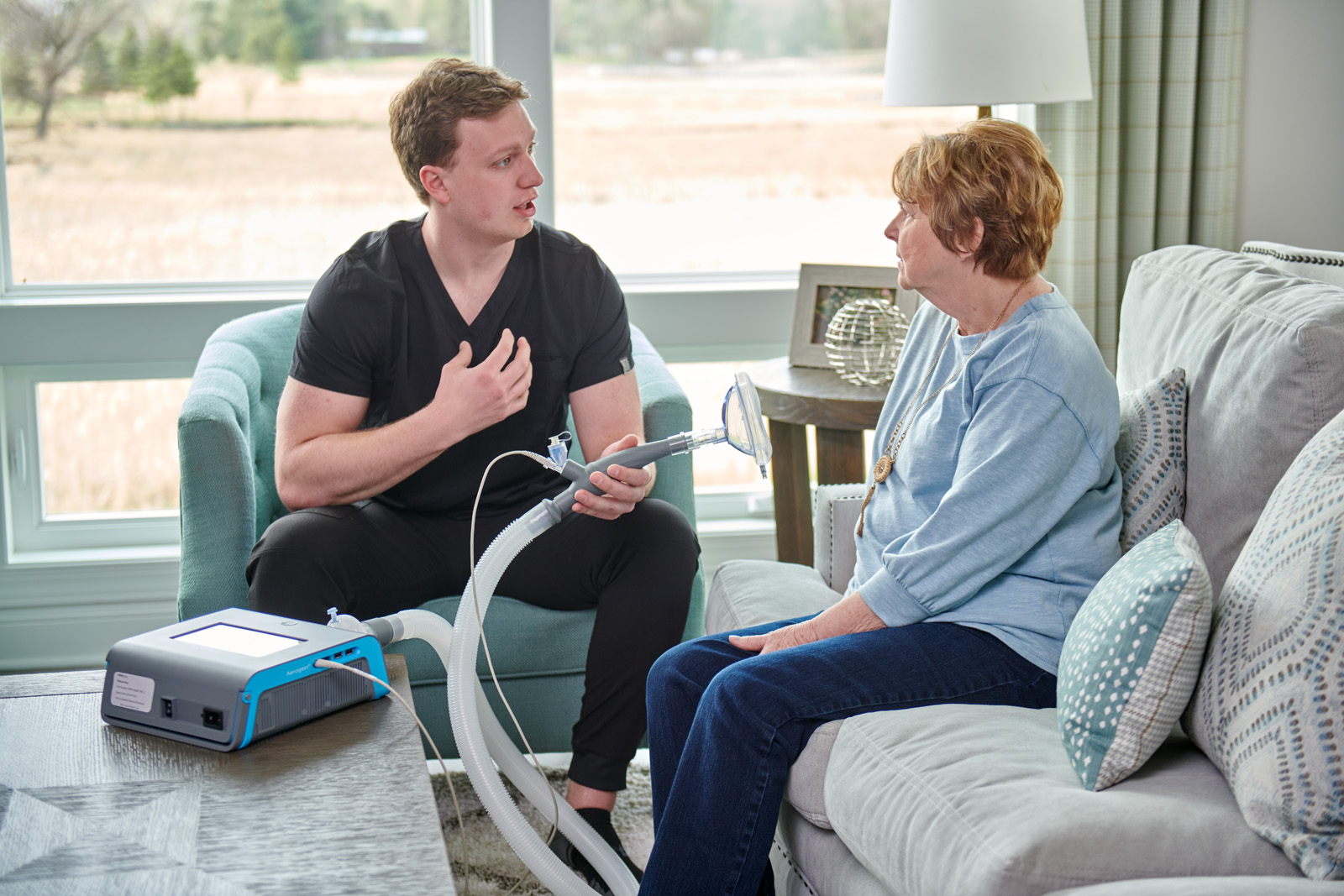Airway clearance techniques (ACTs) can help patients breathe easier. But how do you choose the right ACT for your patient from all the available options? Here we’ll cover two mechanical ACTs that deliver high frequency oscillations and can be used from hospital to home. We’ll explain their similarities and differences and how to decide which is right for your patient.
Compromised mucociliary clearance requires ACT
Mucociliary clearance (MCC) occurs deep within the lungs, where mucus captures bacteria and cilia sweep mucus from smaller to larger airways. Together, the mucus and cilia keep the lungs clear and healthy. MCC and a patient’s cough reflex, which expels mucus from the lungs, are two important mechanisms in a healthy respiratory system.
MCC can be compromised when the mucus becomes too thick or builds up. When this happens, breathing becomes more difficult for patients and can lead to major health complications.
ACTs help thin and loosen mucus in patients with compromised MCC so they can clear retained secretions. These techniques use high frequency oscillations to shake the airways of a patient’s lungs to thin mucus. Oscillating lung expansion (OLE) and high frequency chest wall oscillation (HFCWO) are two types of ACTs that deliver high frequency oscillations differently.
What is OLE?
OLE therapy combines three effective respiratory treatments: positive expiratory pressure, high frequency oscillations, and nebulized aerosol therapy. This comprehensive therapy aims to alleviate blocked or collapsed airways and facilitate the clearance of retained secretions resulting in improved breathing for patients.
During a 10-minute OLE therapy session, a combination of positive expiratory pressure (PEP) and high frequency oscillations (OSC) work together to expand and clear the airways, as depicted in Figure 1. PEP employs back pressure to enhance lung expansion and facilitate the movement of air behind mucus plugs, aiding in their removal. OSC, on the other hand, helps to thin secretions and assists the cilia in transporting mucus towards the upper airways. Additionally, nebulized aerosol can be integrated with PEP and OSC, or used independently to soothe the airways and aid in thinning secretions.

Figure 1. OLE airway clearance overview
There are several OLE systems available: BiWaze® Clear (ABM Respiratory Care), Volara® (Hillrom-Baxter), and MetaNeb® (Hillrom-Baxter).
The newest system on the market is BiWaze Clear, and it offers a few key benefits for patients and caregivers:
- Efficiency: Dual blowers with a closed circuit, Aerogen® Solo nebulizer, 10-minute therapy[1]
- Adaptability: Dual air path control, advanced programming, battery included
- Intuitive: Touch screen, simplified setup, stored therapy profiles
What is HFCWO?
While OLE therapy moves air directly into a patient’s lungs through a mouthpiece, face mask, or trach adapter, HFCWO uses an external garment to mobilize mucus within a patient’s lungs. The traditional garment has air bladders that rapidly fill with air to compress the patient’s chest to create oscillatory airflow within a patient’s lungs. The mobile garment uses percussors to beat against the patient’s chest.
There are several HFCWO systems available: The Vest® (Hillrom-Baxter), AffloVest® (Tactile Medical), Monarch® (Hillrom-Baxter), SmartVest® (Electromed), and InCourage® (RespirTech).
OLE vs. HFCWO
OLE systems provide internal high frequency oscillations combined with lung expansion and aerosol therapy, while HFCWO provides external oscillations to the patient’s chest. Table 1 illustrates the other differences and similarities between the two ACTs.

Table 1. Differences and similarities between OLE and HFCWO
Deciding between OLE and HFCWO
To determine the most suitable ACT, one must consider several factors, including patient preference, comfort, and the specific requirements of their situation. For example, an elderly patient with a collapsed lung will benefit most from an OLE system like the BiWaze Clear. However, a patient who refuses to wear a mask and doesn’t have the strength to keep their mouth tightly closed around a mouthpiece will benefit from HFCWO therapy. The therapy your patient will adhere to is the best therapy for them.
Learn more about the innovative BiWaze Clear system, which helps clear airways by combining three respiratory therapies of positive expiratory pressure, high frequency oscillation and nebulization into an efficient, adaptable, and intuitive 10-minute therapy.

